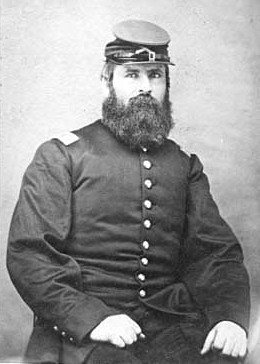In February, 1856 he was appointed Ordnance Sergeant at Fort Ridgely, an artillery school and home to a light artillery battery in the late 1850's. When the regular army pulled out of Fort Ridgely, it left behind several artillery guns; Sgt. Jones was in charge of them. He lived at the fort with his wife Maria and their three children in a log cabin near the stone barracks that housed the soldiers.
In February, 1856 he was appointed Ordnance Sergeant at Fort Ridgely, an artillery school and home to a light artillery battery in the late 1850's. When the regular army pulled out of Fort Ridgely, it left behind several artillery guns; Sgt. Jones was in charge of them. He lived at the fort with his wife Maria and their three children in a log cabin near the stone barracks that housed the soldiers.
Family Members
Advertisement
Records on Ancestry
Sponsored by Ancestry
Advertisement










